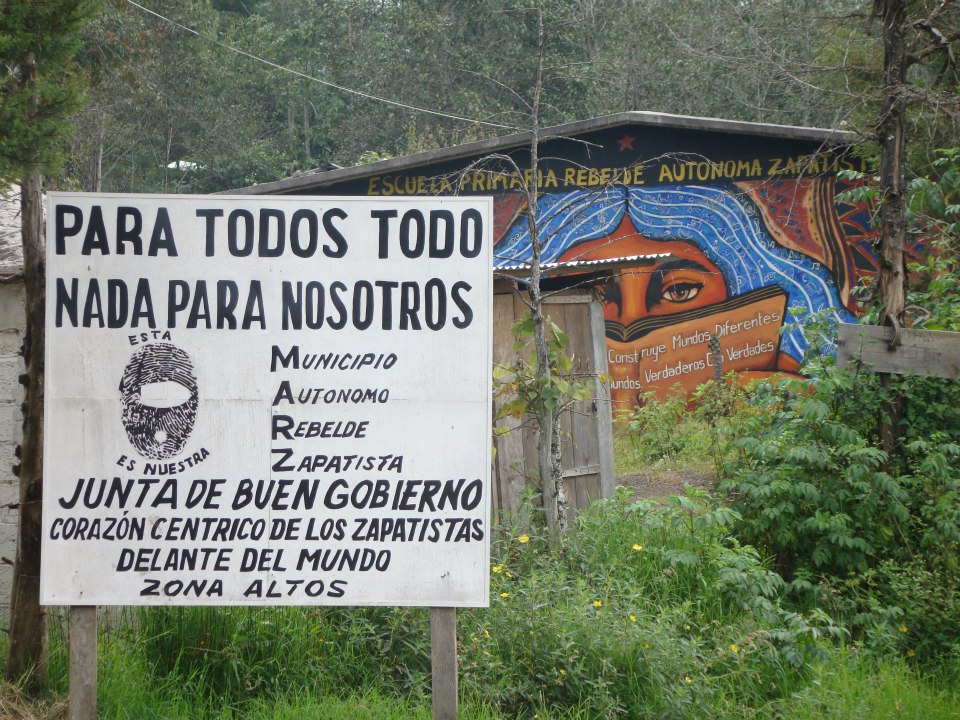
Photo from Schools for Chiapas
In the midst of the recognized violence at the official level that has erupted with increasing intensity in Chiapas for three years—and that has been described here through the pulse of Frayba—we must highlight the constant siege of lands recovered by the EZLN, in which has arisen since 1994, an autonomous form of government that resists counterinsurgency strategies.
The main attacks carried out during these years of the Chiapas crisis are reported by a human rights center that has more legitimacy in the matter than an alienated federal government. They are centered on the towns and communities of La Resistencia, Emiliano Zapata, San Isidro, 16 de Febrero, Lucio Cabañas and Nuevo San Gregorio, which are part of the Moisés y Gandhi region of Caracol 10, of Patria Nueva.
Frayba has characterized those who carry out these attacks against the Zapatistas as armed corporatist groups, since they have strong ties and roots with networks of the current federal administration, as was confirmed these days during the visit of the presidential candidate, Claudia Sheinbaum.
“They have great firepower, high-caliber weapons and tactical equipment, and they also carry out very specific population control exercises. In addition, smaller local groups join them,” explained activist Carlos Ogaz in various references. An even more critical process that appears to be happening now is that such groups have been or are in the process of being co-opted by larger organized crime groups. “Unfortunately they emanate from the communities and, as in the nineties with paramilitarism, they are controlling assemblies and territories from political and social positions in their communities.”
Another serious factor is remilitarization through the construction of ten to fifteen new National Guard barracks, the installation of 71 military camps and the deployment of 1,504 elements of the Navy, 3,466 of the Guard and 3,536 of the Army in the midst of the prevailing environment of impunity left by the bloody counterinsurgency policy of the nineties.
Because of their clientelistic use, programs such as Sembrando Vida, support for young people and older adults, and even others such as the control of the Mediterranean fly, are the breeding ground for violence in Chiapas that the still president Andrés Manuel López Obrador does not want to admit to.
Original article by Diego Enrique Osorno at Milenio (24.04.24)
Translated by Schools for Chiapas.
